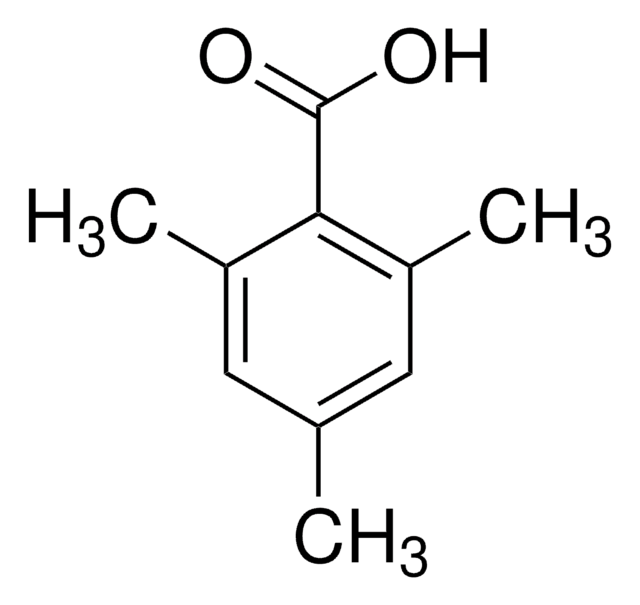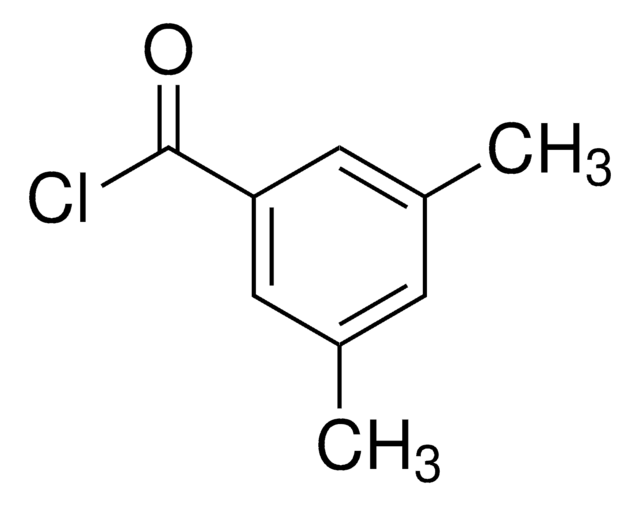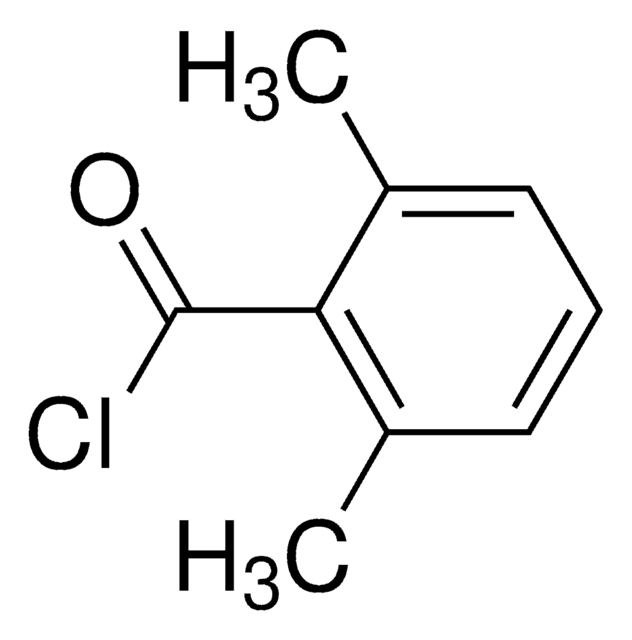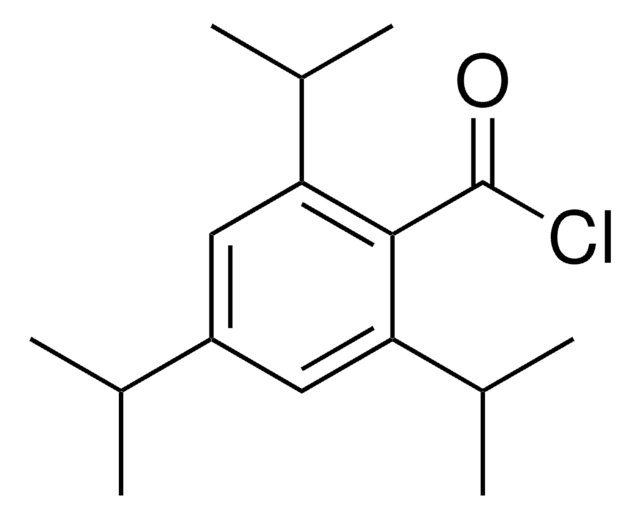All Photos(1)
About This Item
Linear Formula:
(CH3)3(C6H2)C(O)Cl
CAS Number:
Molecular Weight:
182.65
EC Number:
MDL number:
UNSPSC Code:
12352100
PubChem Substance ID:
NACRES:
NA.22
Recommended Products
Assay
97%
refractive index
n20/D 1.529
density
1.095 g/mL at 25 °C
storage temp.
2-8°C
SMILES string
Cc1cc(C)c(c(C)c1)C(Cl)=O
InChI
1S/C10H11ClO/c1-6-4-7(2)9(10(11)12)8(3)5-6/h4-5H,1-3H3
InChI key
UKRQMDIFLKHCRO-UHFFFAOYSA-N
Signal Word
Danger
Hazard Statements
Precautionary Statements
Hazard Classifications
Skin Corr. 1B
Storage Class Code
8A - Combustible corrosive hazardous materials
WGK
WGK 2
Flash Point(F)
>230.0 °F
Flash Point(C)
> 110 °C
Personal Protective Equipment
dust mask type N95 (US), Eyeshields, Gloves
Certificates of Analysis (COA)
Search for Certificates of Analysis (COA) by entering the products Lot/Batch Number. Lot and Batch Numbers can be found on a product’s label following the words ‘Lot’ or ‘Batch’.
Already Own This Product?
Find documentation for the products that you have recently purchased in the Document Library.
Customers Also Viewed
Cancan Xu et al.
ACS applied materials & interfaces, 10(12), 9969-9979 (2018-02-17)
Cell printing is becoming a common technique to fabricate cellularized printed scaffold for biomedical application. There are still significant challenges in soft tissue bioprinting using hydrogels, which requires live cells inside the hydrogels. Moreover, the resilient mechanical properties from hydrogels
Zhongliang Jiang et al.
Biofabrication, 12(3), 035006-035006 (2020-03-12)
Hydrogels formed via free radical-mediated thiol-ene step-growth photopolymerization have been developed for a broad range of tissue engineering and regenerative medicine applications. While the crosslinking mechanism of thiol-ene hydrogels has been well-described, there has been only limited work exploring the
Xuanyi Ma et al.
Biomaterials, 185, 310-321 (2018-09-29)
Hepatocellular carcinoma (HCC), as the fifth most common malignant cancer, develops and progresses mostly in a cirrhotic liver where stiff nodules are separated by fibrous bands. Scaffolds that can provide a 3D cirrhotic mechanical environment with complex native composition and
Xuanyi Ma et al.
Acta biomaterialia, 95, 319-327 (2018-12-24)
Human induced pluripotent stem cell - derived cardiomyocytes (iPSC-CMs) are regarded as a promising cell source for establishing in-vitro personalized cardiac tissue models and developing therapeutics. However, analyzing cardiac force and drug response using mature human iPSC-CMs in a high-throughput
Rujing Zhang et al.
Lab on a chip, 17(24), 4273-4282 (2017-11-09)
Three-dimensional (3D) in vitro models capturing both the structural and dynamic complexity of the in vivo situation are in great demand as an alternative to animal models. Despite tremendous progress in engineering complex tissue/organ models in the past decade, approaches
Our team of scientists has experience in all areas of research including Life Science, Material Science, Chemical Synthesis, Chromatography, Analytical and many others.
Contact Technical Service











